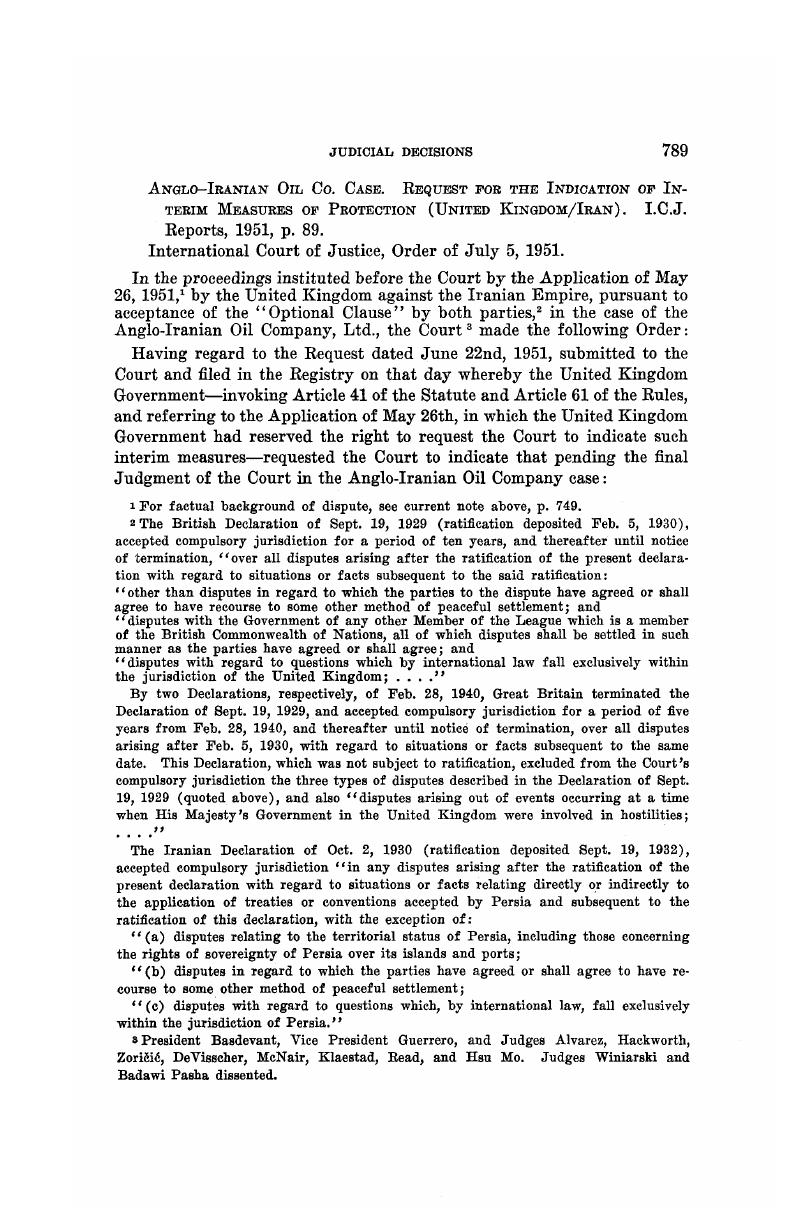No CrossRef data available.
Published online by Cambridge University Press: 20 April 2017

1 For factual background of dispute, see current note above, p. 749.
2 The British Declaration of Sept. 19, 1929 (ratification deposited Feb. 5, 1930),accepted compulsory jurisdiction for a period of ten years, and thereafter until notice of termination, “over all disputes arising after the ratification of the present declaration with regard to situations or facts subsequent to the said ratification: “other than disputes in regard to which the parties to the dispute have agreed or shall agree to have recourse to some other method of peaceful settlement; and “disputes with the Government of any otherMember of the League which is a member of the British Commonwealth of Nations, all of which disputes shall be settled in such manner as the parties have agreed or shall agree; and “disputes with regard to questions which by international law fall exclusively within the jurisdiction of the United Kingdom;. …”
By two Declarations, respectively, of Feb. 28, 1940, Great Britain terminated the Declaration of Sept. 19, 1929, and accepted compulsory jurisdiction for a period of five years from Feb. 28, 1940, and thereafter until notice of termination, over all disputes arising after Feb. 5, 1930, with regard to situations or facts subsequent to the same date. This Declaration, which was not subject to ratification, excluded from the Court's compulsory jurisdiction the three types of disputes described in the Declaration of Sept. 19, 1929 (quoted above), and also "disputes arising out of events occurring at a time when His Majesty's Government in the United Kingdom were involved in hostilities;. …
The Iranian Declaration of Oct. 2, 1930 (ratification deposited Sept. 19, 1932), accepted compulsory jurisdiction . “in any disputes arising after the ratification of the present declaration with regard to situations or facts relating directly or indirectly to the application of treaties or conventions accepted by Persia and subsequent to the ratification of this declaration, with the exception of:
“(a) disputes relating to the territorial status of Persia, including those concerning the rights of sovereignty of Persia over its islands and ports;
“(b) disputes in regard to which the parties have agreed or shall agree to have recourse to some other method of peaceful settlement;
“(c) disputes with regard to questions which, by international law, fall exclusively within the jurisdiction of Persia.”
3 President Basdevant, Vice President Guerrero, and Judges Alvarez, Hackworth,Zoričić, DeVisscher, McNair, Klaestad, Read, and Hsu Mo. Judges Winiarski and Badawi Pasha dissented.
4 By order dated July 5, 1951, the Court fixed the following time-limits for the filing of written pleadings: Sept. 3, 1951, for the memorial of the United Kingdom Government; Dec. 31, 1951, for the counter-memorial of the Government of Iran (I.C.J. Eeports, 1951, p. 100); by order of Aug. 22, 1951, the time-limits were extended to Oct.10, 1951, for the deposit of the U. K. memorial, and to Jan. 10, 1952, for the deposit of the Iranian counter-memorial.